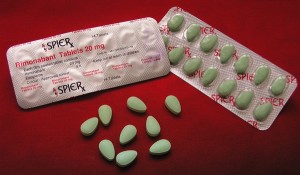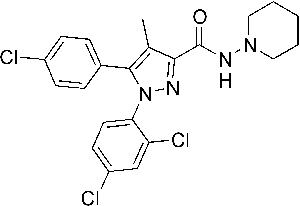 Rimonabant (tradename Acomplia) is a cannabinoid inverse agonist released by pharmaceutical giant, Sanofi-Aventis. The first of its kind, the drug was released around 2006, but was pulled from the market early last year due to the side effects it came with no longer being classed as worth it. With side effects being reported including depression and suicidal tendencies, the drug was never approved for the US market.
Rimonabant (tradename Acomplia) is a cannabinoid inverse agonist released by pharmaceutical giant, Sanofi-Aventis. The first of its kind, the drug was released around 2006, but was pulled from the market early last year due to the side effects it came with no longer being classed as worth it. With side effects being reported including depression and suicidal tendencies, the drug was never approved for the US market.
As noted, Rimonabant is an inverse agonist of the cannabinoid CB1 receptor but don’t mistake this as a receptor antagonist. An antagonist will bind to a receptor, blocking another substance from activating it. An inverse agonist will bind to the receptor and reverse the activity typically expected. The main constituent of cannabis, Tetrahydrocannabinol (THC), is a CB1 receptor agonist, which a lot of you will know stimulates the appetite (giving “the munchies”). An inverse agonist like Rimonabant has the opposite effect, reducing appetite. And this is why it became briefly popular for weight loss. But CB1 is not restricted to just the CNS, the receptors are located peripherally also, including in fat and liver cells where their activation increases fat synthesis. Thus, reversal of this activation via Rimonabant lead to decreased fat synthesis.
A recent press release by Danish company, 7TM Pharma, suggests that we may soon have the first of the next generation of CB1-targeting drugs – currently named “TM38837”. TM38837 is not an inverse agonist of the CB1 receptor, however, this one is actually an antagonist, which 7TM claims gives the same weight loss as Rimonabant, but without the mental side effects and have conducted a Phase I clinical trial to show this. A small amount of the participants in this trial reported side effects, although not as severe as those associated with Rimonabant – nausea and diarrhoea being the worst.
Watch this space.

